Butterflies have a life cycle that starts with eggs. They turn into caterpillars and then into chrysalis before the adult butterfly emerges.
Eggs can be laid in various numbers. Success rates are predicated on temperature, host plants, and predators.
Butterflies lay varying numbers of eggs, depending on their species. Different shapes and colors characterize these eggs according to each butterfly species.
Most butterflies lay eggs on a host plant which is later used as food by the emerging caterpillar.
A very small number of butterflies lay eggs on the ground or under fallen leaves at ground level.
The better the egg-laying process is the higher the survival chances of the emerging caterpillars get.
Many butterflies have developed high skills in searching for the best host plant for the highest success rate of hatching eggs.
Females can even travel to less-populated areas to find plants other species don’t feed on to lay eggs.
Table of Contents
Butterfly Life Cycle
Butterflies begin their lives as eggs. They go through different life stages before finally becoming an adult.

Egg – a typical structure with a hard outer shell that measures between 1 and 3 mm in diameter. Eggs are attached to the leaves of host plants.
Caterpillar – the larva of butterflies are referred to as caterpillars. The larvae grow by eating and shedding their exoskeleton.
Chrysalis – the final pupal stage of the species before adults emerge.
Adult – the final stage of the butterfly with a fully-developed body and developed wings.
The time it takes for the egg to turn into an adult butterfly varies from one species to another.
The egg first hatches just after a few days. It then takes a few other days for the larvae to pupate into adults.
Feeding is essential during the first life stages when the eggs turn into caterpillars. This is why only host plants that the larvae can feed on are chosen to lay eggs.
Some butterflies travel very long distances to lay eggs. Migratory species in North America travel South to lay eggs where the eggs overwinter before hatching in the spring.
Some butterflies even rely on snow to protect their eggs from freezing temperatures in the winter.
Kernel Blue butterflies lay eggs that snow protects. These eggs hatch in the spring.
Mating and Egg Formation
Unlike other species of insects, butterflies are ready to mate as soon as they emerge as adults.
Male butterflies spend a considerable amount of time looking for a female mate each day.
The mating process itself can be based on.
A male luring females – males can sometimes use their colorful wings to attract females. They can rest on trees or other high-visibility points where their colorful wings can attract females.
A female luring males – females can release chemicals that attract male mates. This is one of the most common mating strategies in the world of butterflies.
A male chasing a female – some species mate in flight. Males choose a female which they pin to the ground for mating.
Male butterflies then pass the spermatophore to females.
Spermatophores are small capsule or egg-like formations that contain sperm.
Butterfly Egg Laying
The process of laying eggs is complex. Each species has its own preferences for the timing and the number of laid eggs.
Butterflies lay eggs on plants
Most female butterflies seek out a place to lay eggs soon after mating. This is not an arbitrary process.
They use chemical smell-like receptors to discover the right plant to lay eggs on.
Vision can also be used to identify the most common plant species for the eggs to grow on.
An innate ability to migrate to warmer climates is specific to migratory species that move to survive and lay eggs.
Eggs are laid on plant leaves
Since eggs are backed by sticky substances they are mostly laid on leaves of plants and trees.
Common trees butterflies lay eggs on – willow, oak, elm
Common plants butterflies lay eggs on – lantana, milkweed, asters, nettle
Egg Physical Characteristics
Butterfly eggs have either a round or oval shape. They can have white, cream, red, green, or other colors.
These eggs measure at least 1mm. Some of the largest butterfly eggs measure around 3mm.
Butterflies lay eggs 1 to 3 times per year
Butterflies lay eggs 1 to 3 times per year depending on the species and their location.
Species living in warmer Southern US habitats lay more eggs a few times per year compared to their Northern counterparts.
Up to 3 broods per year can appear in the warmest sights of North America.
Up to 500 eggs can be laid at once
Butterflies typically lay at least 1 egg at a time. They can lay as many as 500 eggs, depending on their species.
Karner Blue (Plebejus melissa samuelis) butterflies are among the species that lay less than 100 eggs at a time. These butterflies lay around 80 eggs at once.
| Butterfly species | Number of eggs |
| Monarch | 300 to 500 eggs |
| Painted Lady | Up to 500 eggs |
| Tiger Swallowtail | Up to 250 |
| Hairstreak Butterflies | 1 or more |
| Zebra Swallowtails | 1 or more |
| Queen | 1 or more |
| Viceroy | 2-3 |
Host plants
Each species lays eggs on a specific plant. This plant is chosen either as food or as a sheltering species for the eggs.
Some butterflies even lay eggs on tree leaves while others lay eggs on various types of grass.
Willows are some of the most common species butterflies lay eggs on.
Elm and poplar are other trees that can be used as hosts together with colorful plants and even herbs.
| Butterfly species | Host plant |
| Hairstreak | Elm |
| Giant Swallowtail | Prickly ash |
| Gulf Fritillary | Passion vines |
| Eastern Tiger Swallowtail | Magnolias, wild cherry, willow |
| Common Buckeye | Plantains |
| Eastern Comma | Nettles |
| Summer Azure | New Jersey Tea |
Butterfly Egg Identification
Each butterfly species has different types of eggs. These eggs vary in size, shape, and color as follows.
Monarch
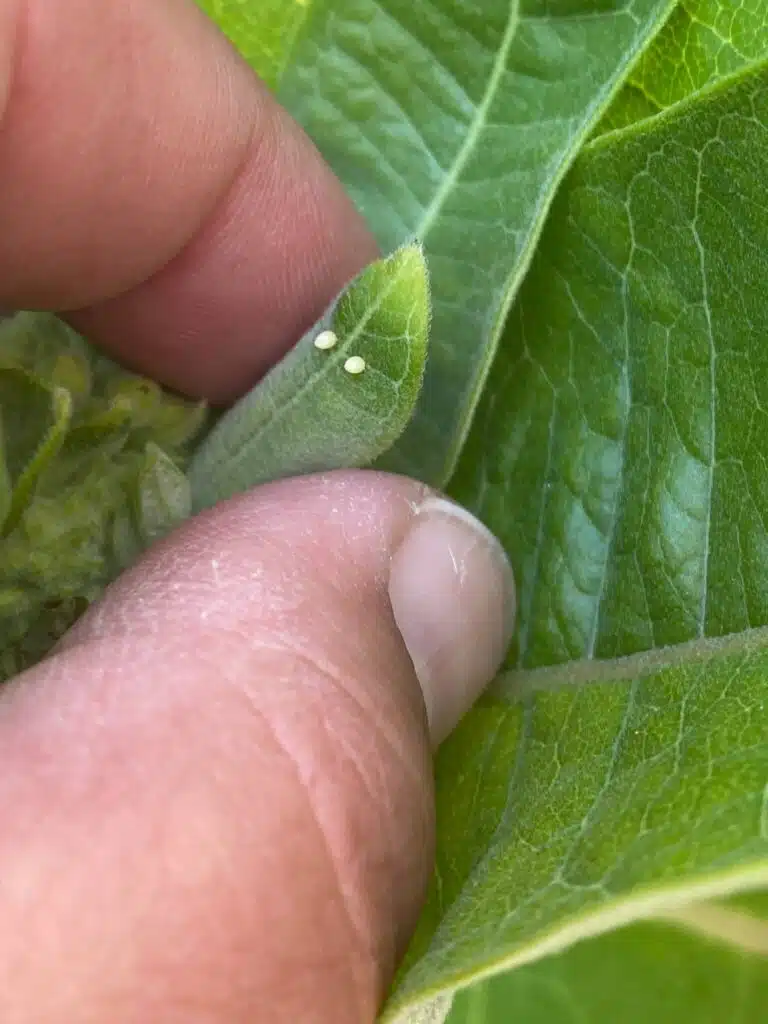
The eggs of Monarch butterflies have a white or off-white color. They have an elongated shape with striations on the surface.
Eggs of the species measure 1.2 mm. It takes 3-4 days for Monarch eggs to hatch.
Swallowtail
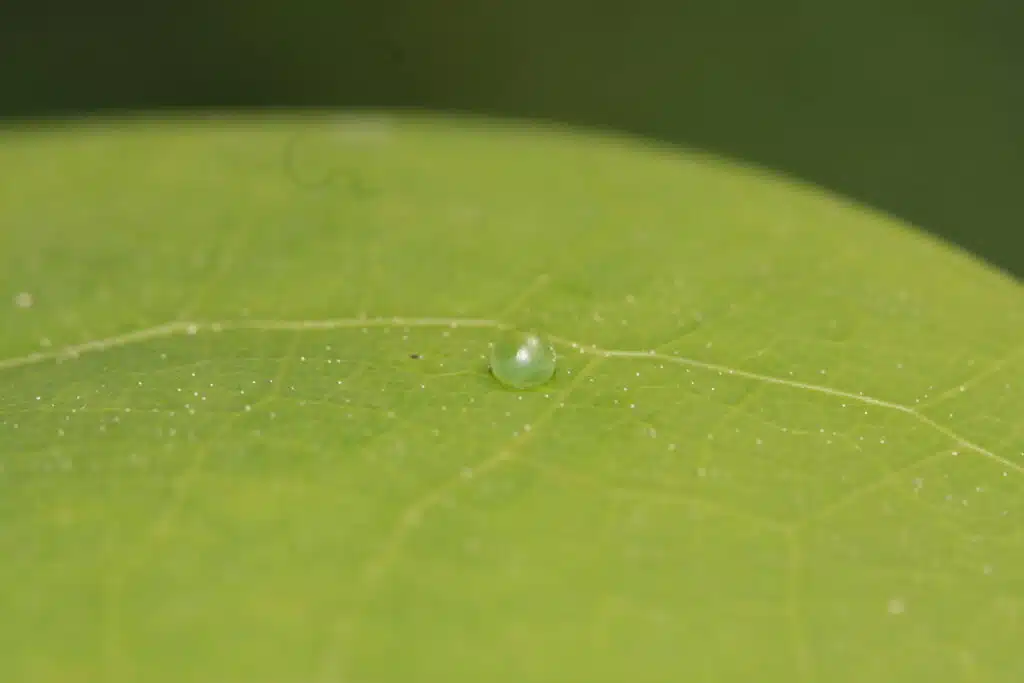
Swallowtails lay small spherical eggs. Most eggs of swallowtails are white. Pearl white is a common nuance for the species.
Cabbage White
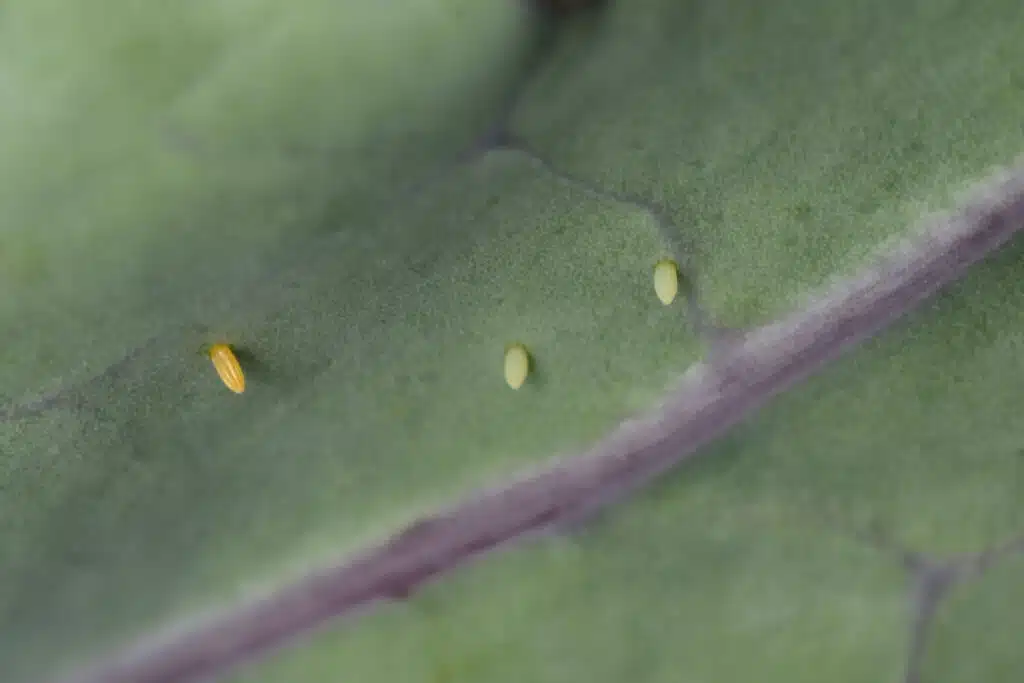
Cabbage White butterflies lay atypical eggs. Their eggs have an elongated shape with a pale orange color.
12 ridges are distinguished on the surface of the egg.
Female Cabbage White butterflies can lay eggs immediately after becoming an adult. Most eggs are laid after the female reaches one week.
Gulf Fritillary
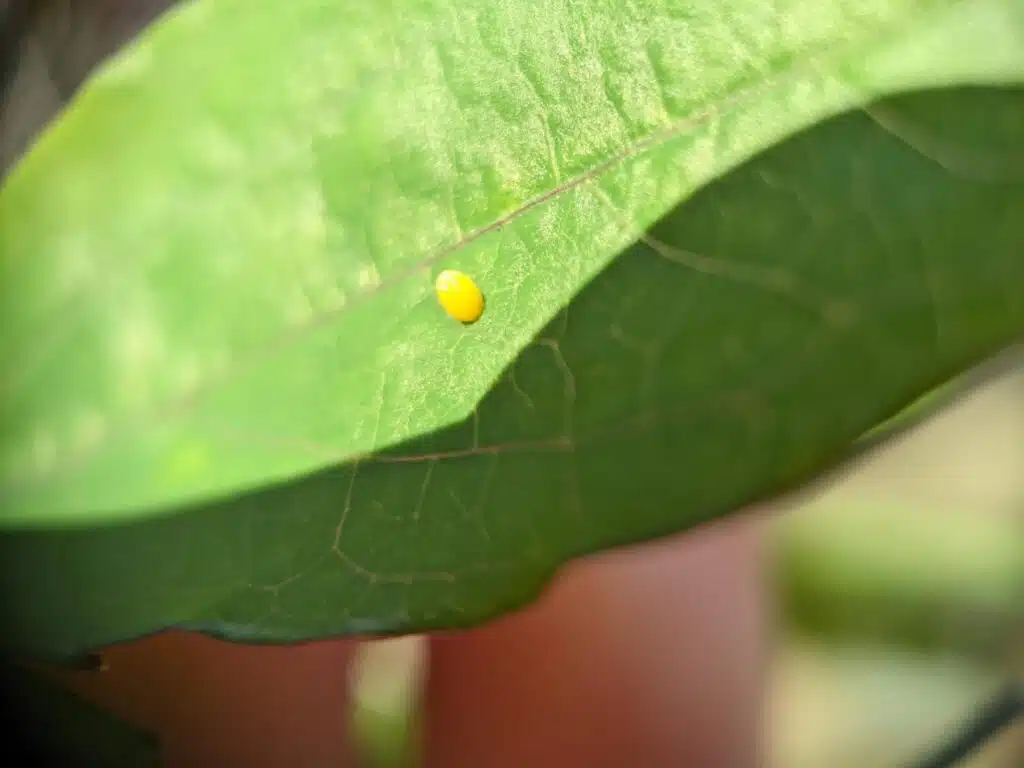
This species of butterfly lays yellow eggs. The color is rich and the surface of the eggs is shiny.
The eggs have a slightly elongated shape.
Ridges are also characteristic of the shell of the eggs.
Multiple eggs are laid at once, typically directly on host plant leaves.
Pearl Crescent
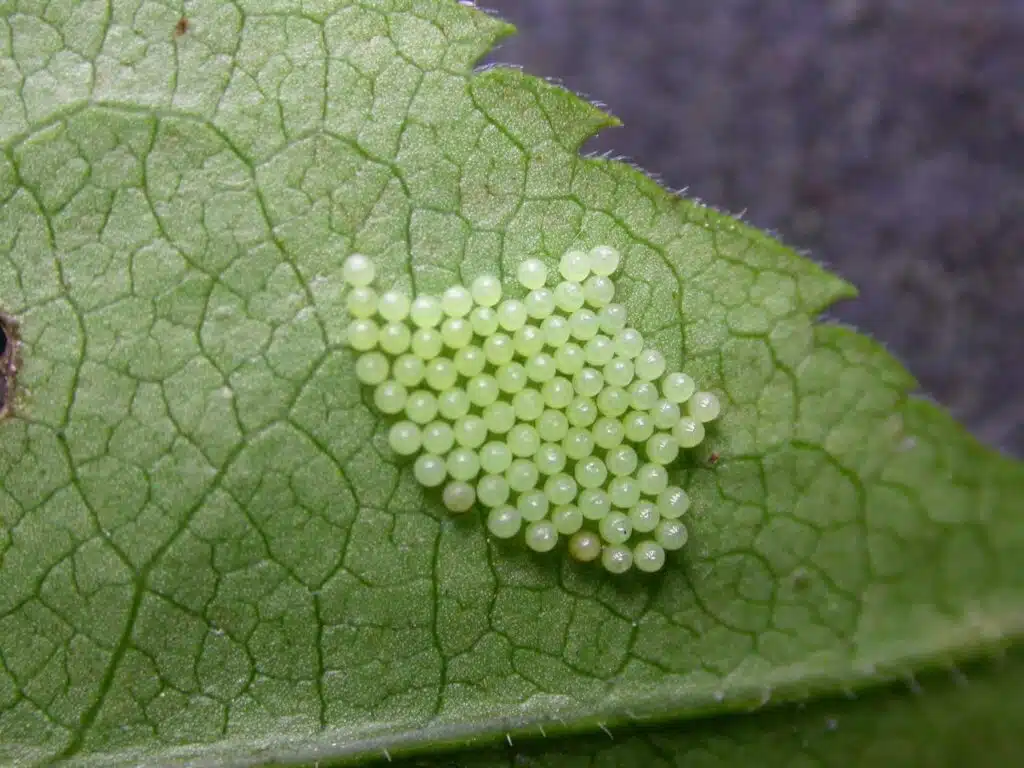
Pearl Crescent butterflies lay both white and green eggs. These eggs have a spherical shape and they also have small tiny irregularities which may look like perforations.
Eggs are laid close to each other in clusters. Females prefer to lay them on the underside of leaves to hide them from predators.
Common Buckeye
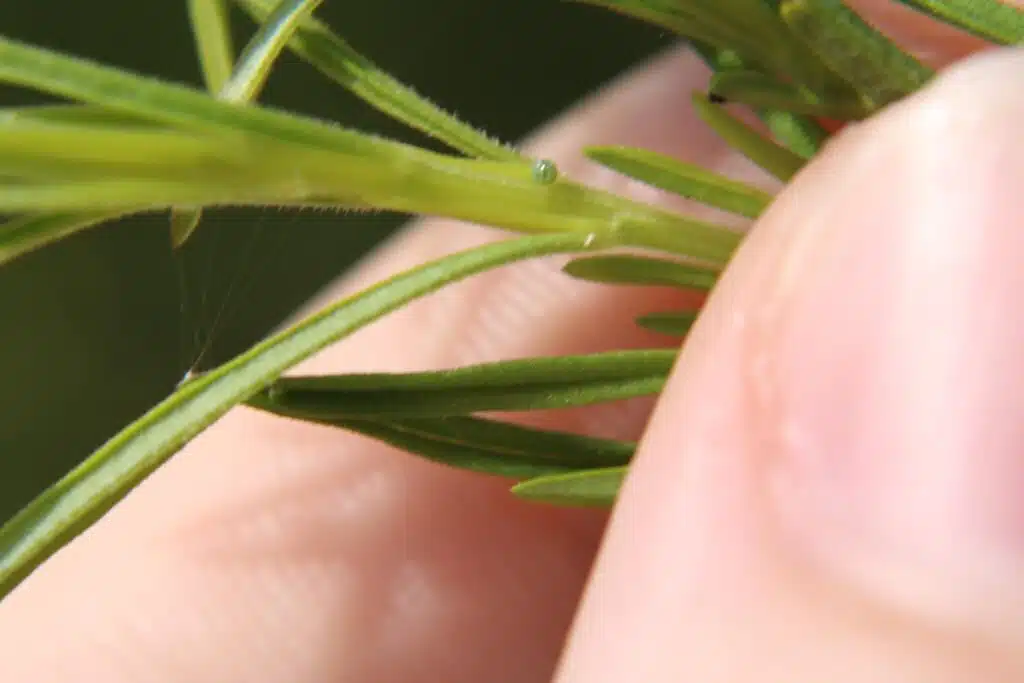
Common Buckeyes lay green eggs on host plant leaves. Their eggs have parallel white stripes.
These eggs can easily be overlooked. Many females of the species only lay a single egg on one leaf or plant.
Red Admiral
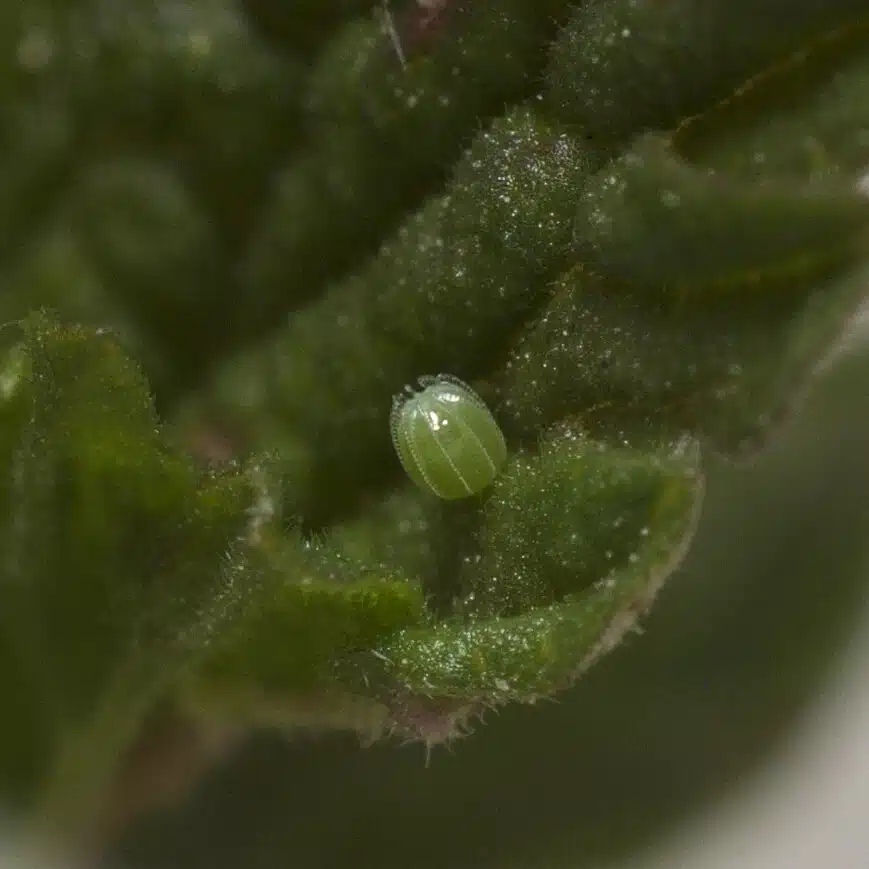
Common nettles are one of the host plants of Red Admiral eggs.
The species lays dark green or light green eggs. White stripes are distinguished on the surface of these eggs so that they camouflage with the green color of nettles.
Further Reading:
Painted Lady
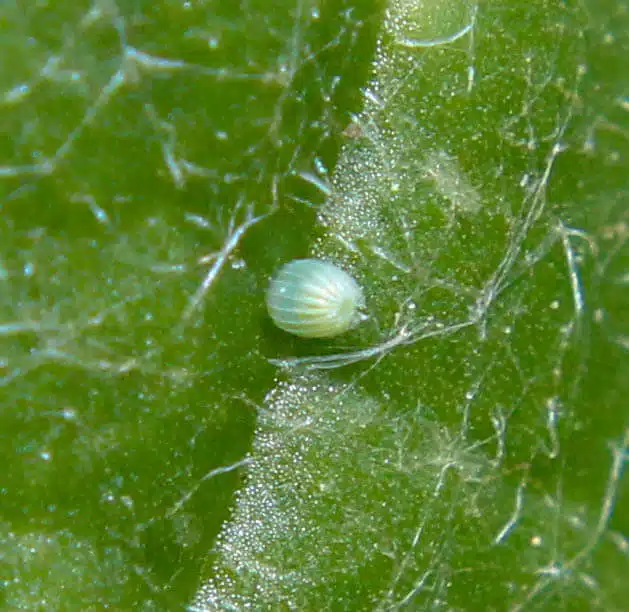
Painted Lady butterflies have green eggs. The eggs have a spherical shape.
These eggs show multiple ridges and can be laid singly or in small clusters.
Red-spotted Admiral
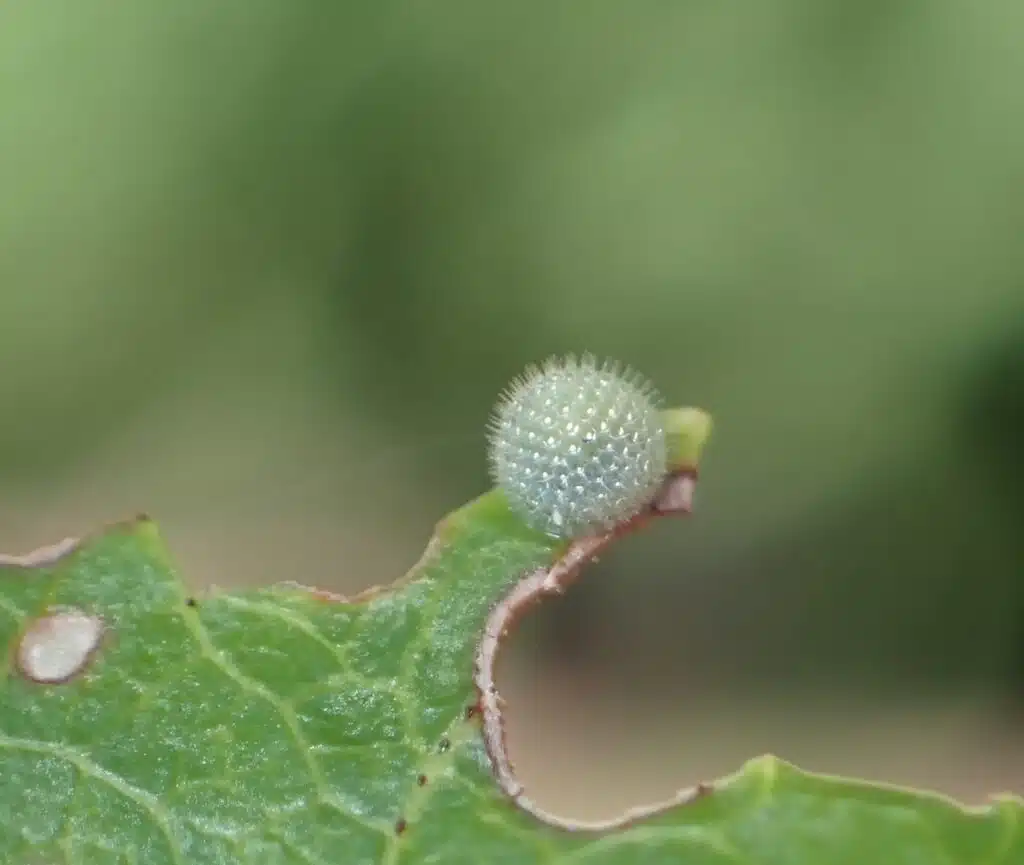
Red Spotted Admirals lay complex eggs. These eggs are initially transparent green but they later darken in color.
The eggs have small spikes on the surface.
Red-spotted Admiral eggs have a 1mm diameter.
Hairstreak
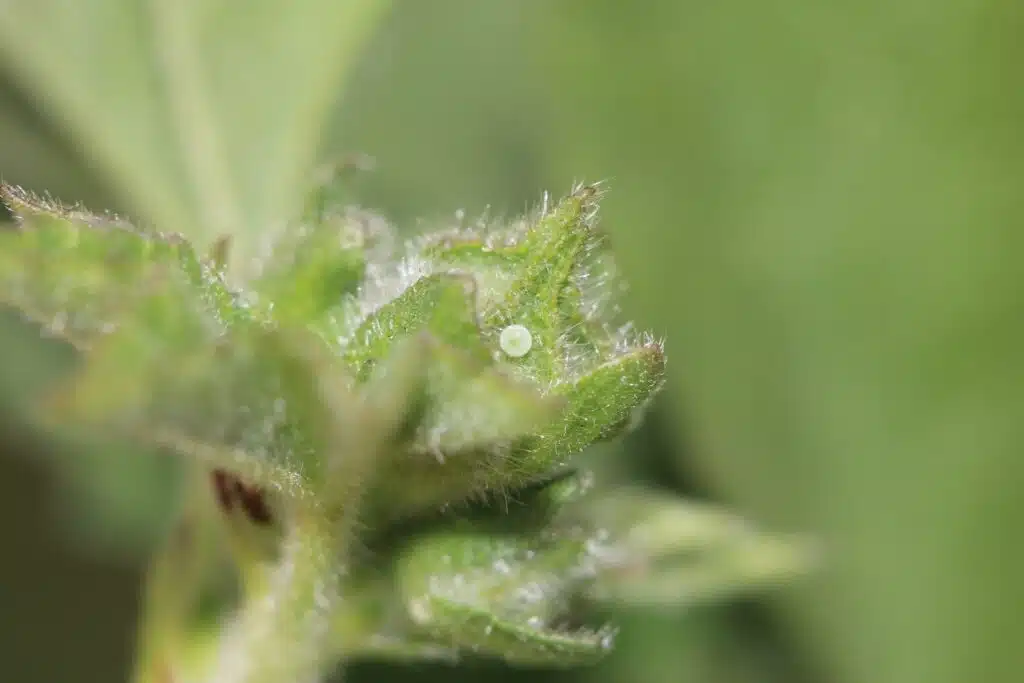
Hairstreak butterflies lay single eggs.
These eggs have a spherical shape and they are white. The eggs show hollow surfaces at the surface.
Hairstreak eggs are commonly laid between plant twigs.
Eastern Tailed-Blue
Single eggs are laid by Eastern Tailed-Blue butterflies.
Twigs and leaves are the ideal locations for laying eggs of the species. The eggs have a white color and a flattened spherical shape.
American Lady
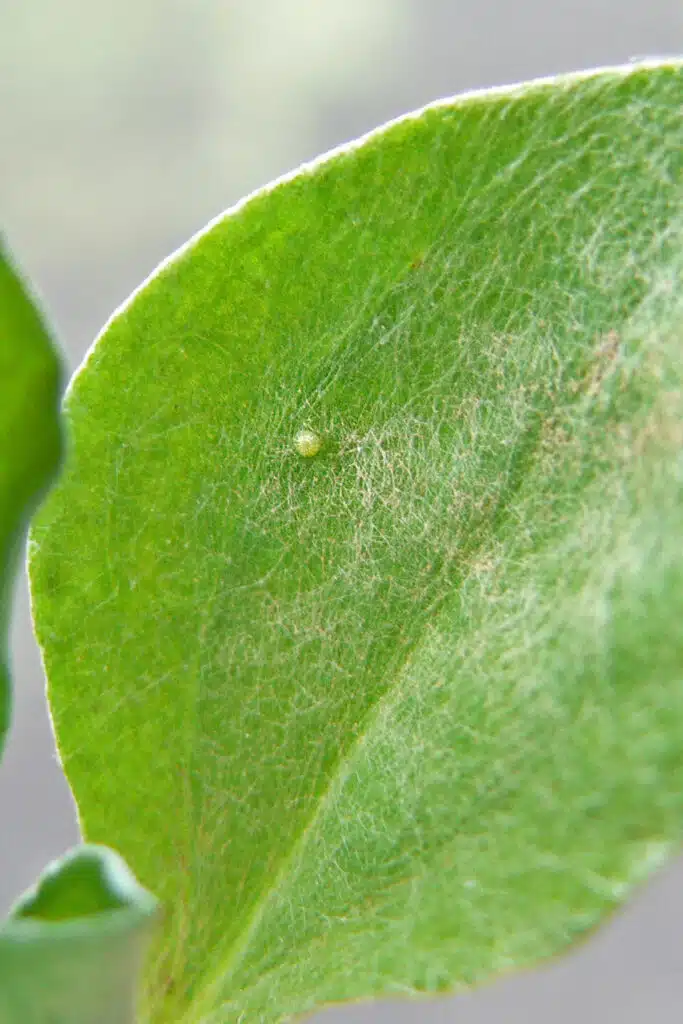
One or more eggs are laid by female American Lady butterflies.
The eggs have an elongated shape and are laid with the pointed section outwards. These eggs are green and characterized by multiple ridges.
Orange Sulphur
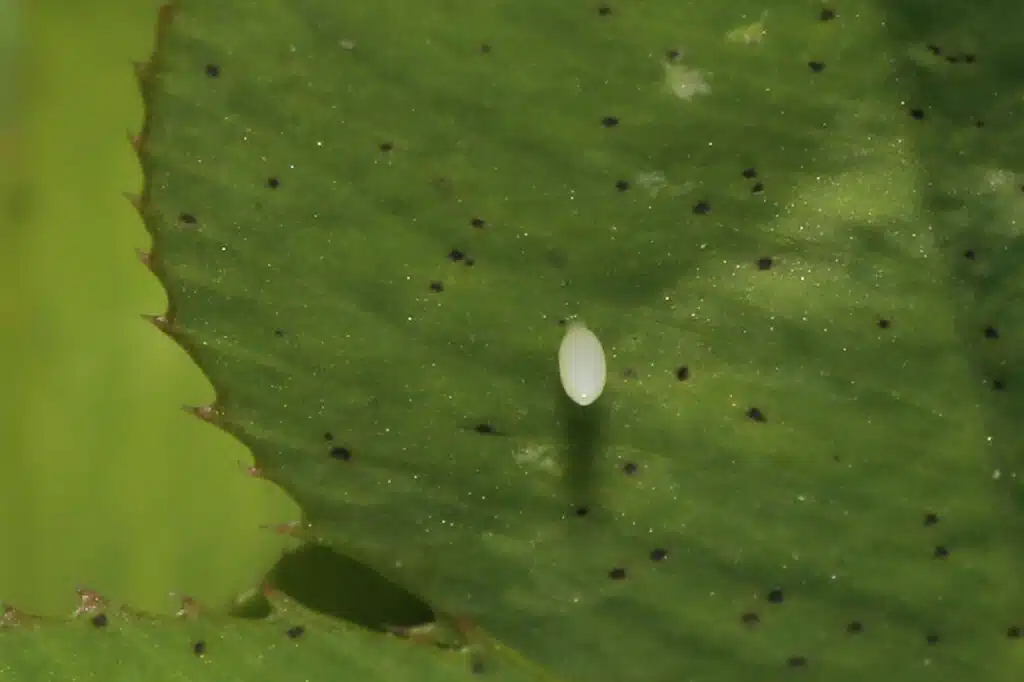
Orange Sulphur eggs have an elongated shape. They are often laid singly on plant leaves.
These eggs have an initial white color. This color changes to crimson within a couple of days.
Variegated Fritillary
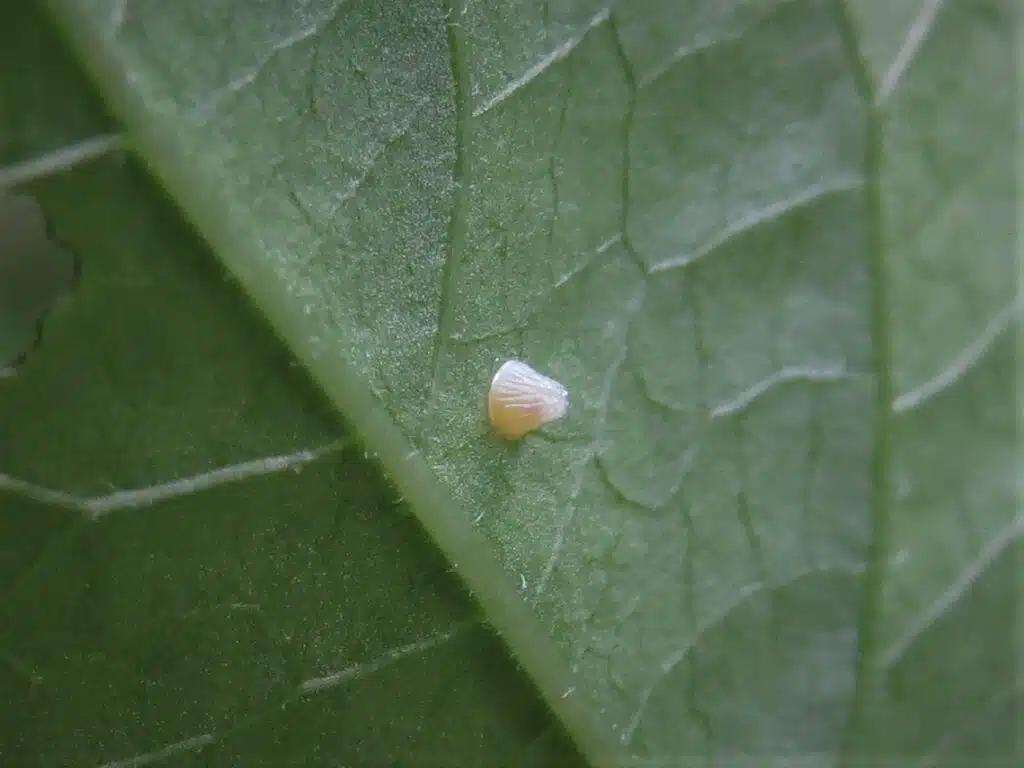
Variegated Fritillary is among the species that can spend up to 2 weeks in their egg stage.
The eggs of the species are white with a glossy surface.
Question Mark
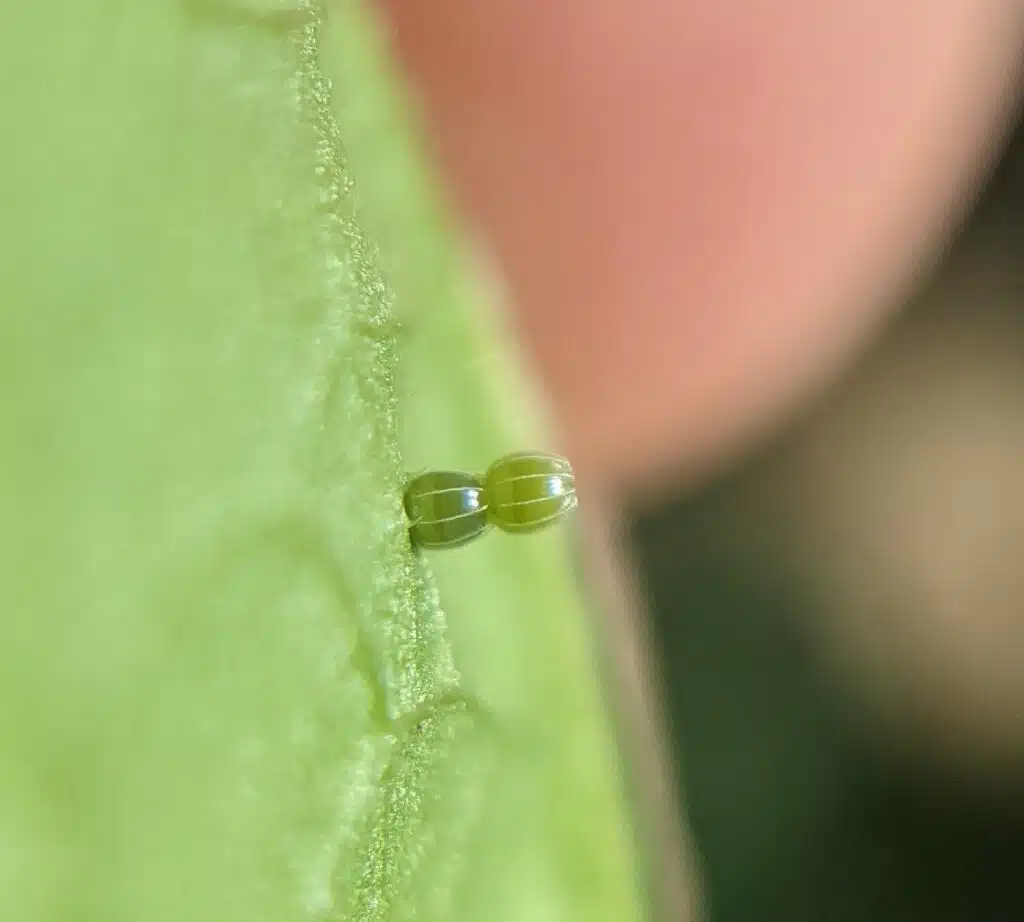
Question Mark butterflies lay green eggs. Their eggs have ridges on the surface and white stripes.
Clusters of eggs are laid on leaves.
Queen
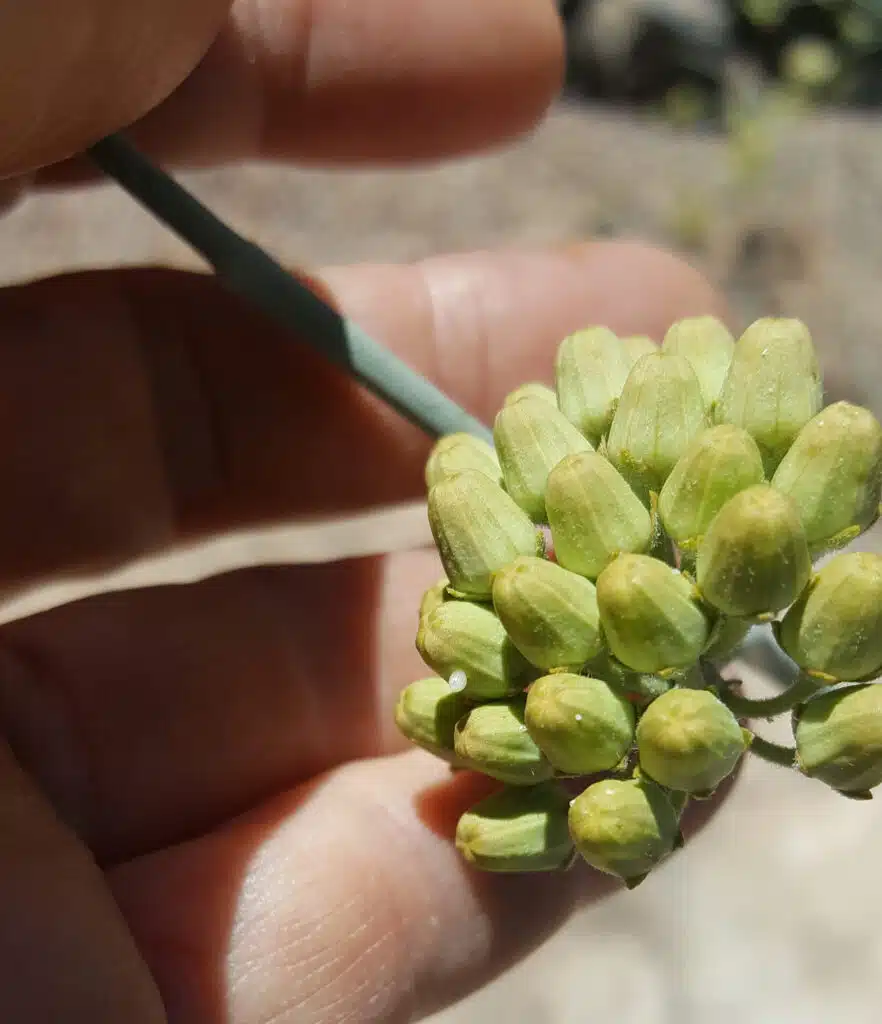
Female Queen butterflies lay yellow or off-white eggs on leaves.
The eggs have an elongated round shape. They have visible vertical ridges.
Hackberry Emperor
These butterflies lay eggs in clusters. White or cream spherical eggs are characteristic of the species.
A large number of eggs laid at once makes this species less dependent on finding multiple host plants nearby.
Mourning Cloak
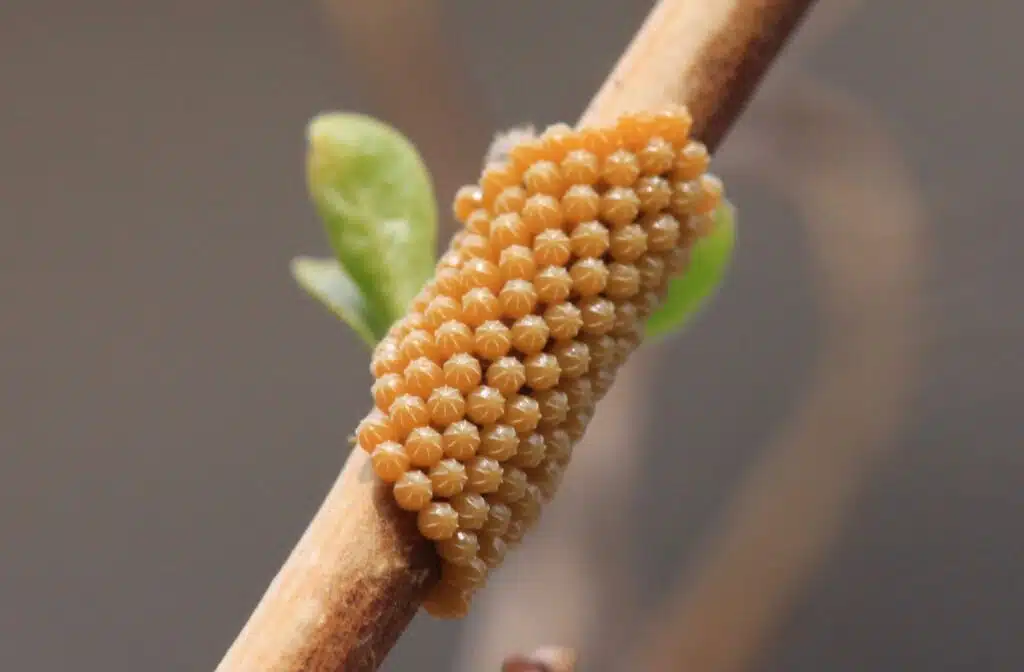
Mourning Cloak eggs are among the smallest in the butterfly world. These eggs can have a diameter of only 0.7 inches.
Clusters of eggs are laid by the female Mourning Cloak butterfly.
These eggs are colorful pink at first. They turn to amber and orange before becoming black.
Viceroy
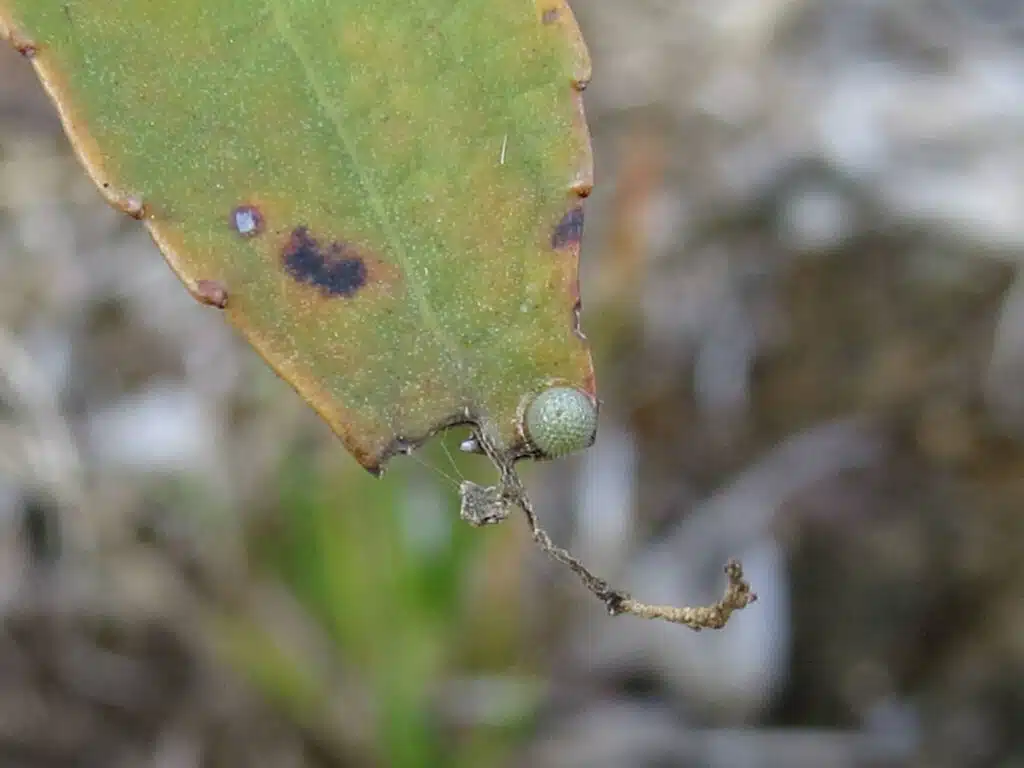
Pale green or yellow eggs are laid by Viceroy butterflies.
These eggs can be laid in clusters or individually. The eggs mimic galls on stems.
Cloudless Sulphur
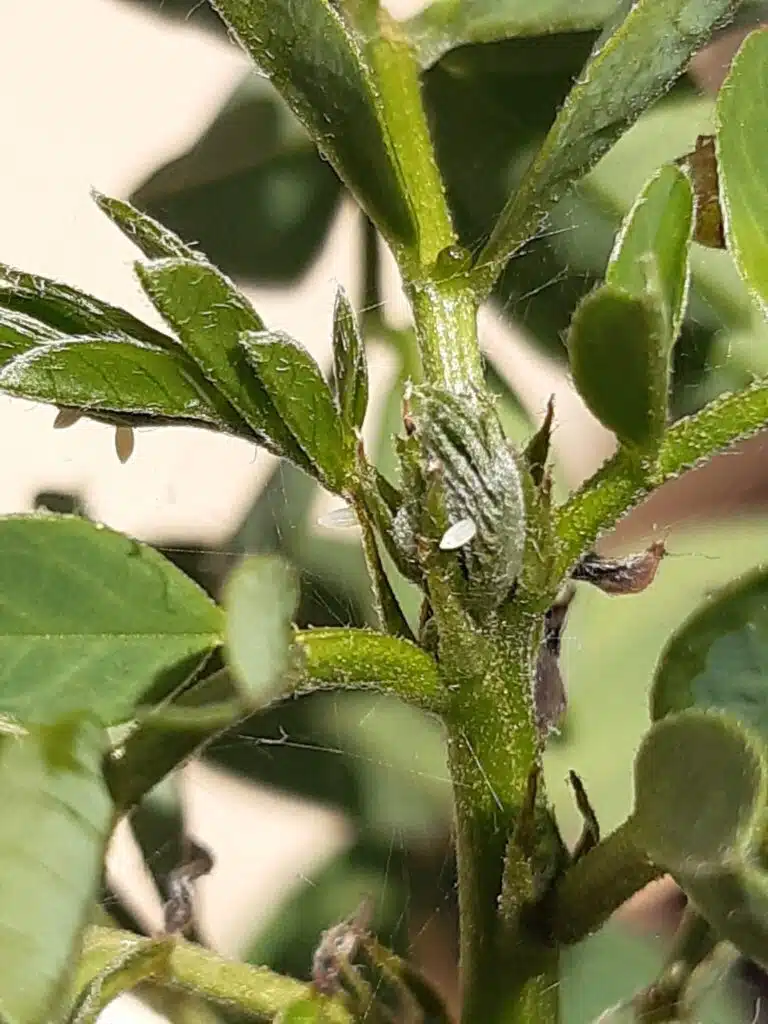
Clouded Sulphurs lay tiny spherical eggs. These eggs are initially yellow.
They later turn to a darker nuance or even an orange nuance.
American Snout
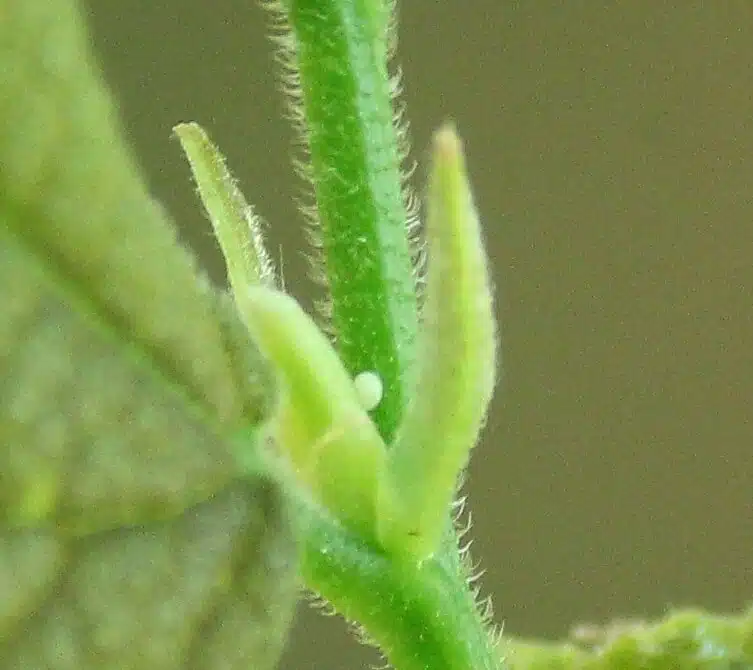
American Snout butterflies lay green to yellow eggs.
These eggs have a spherical flattened shape. Ridges are distinguished at the surface of the eggs.
Horace’s Duskywing
Oak trees are a common host for Horace’s Duskywing eggs.
These eggs are laid on the leaves of oaks. They are green on the first day and later turn light pink.
Sleepy Orange
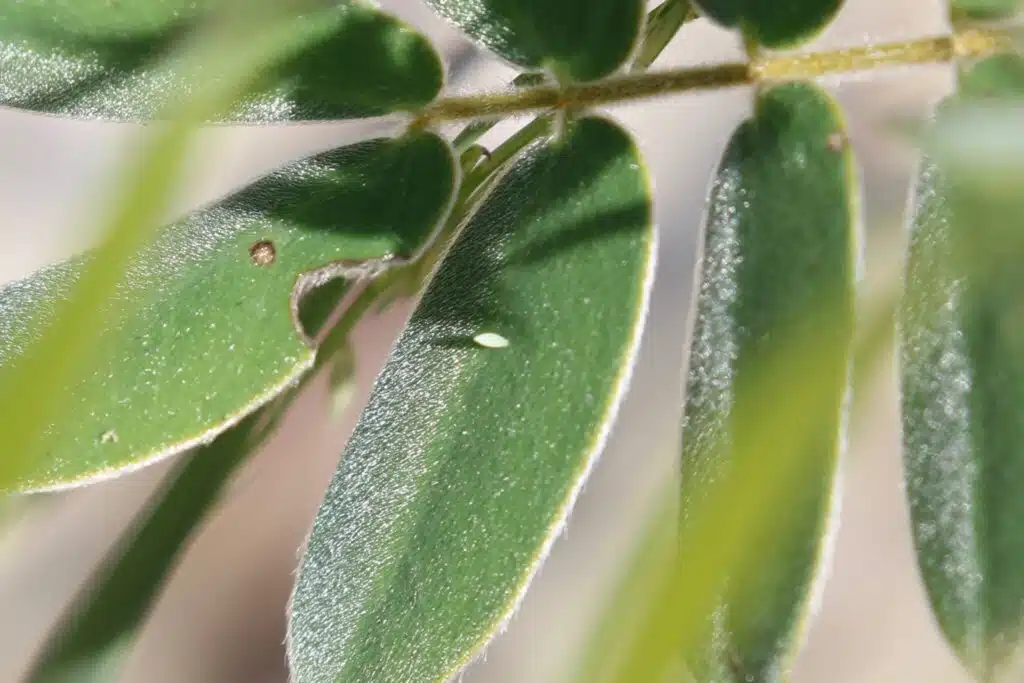
Sleepy Orange has tubular-shaped eggs. These eggs are white at first.
The color of the eggs darkens as the days pass. They eventually become green.
Checkered White
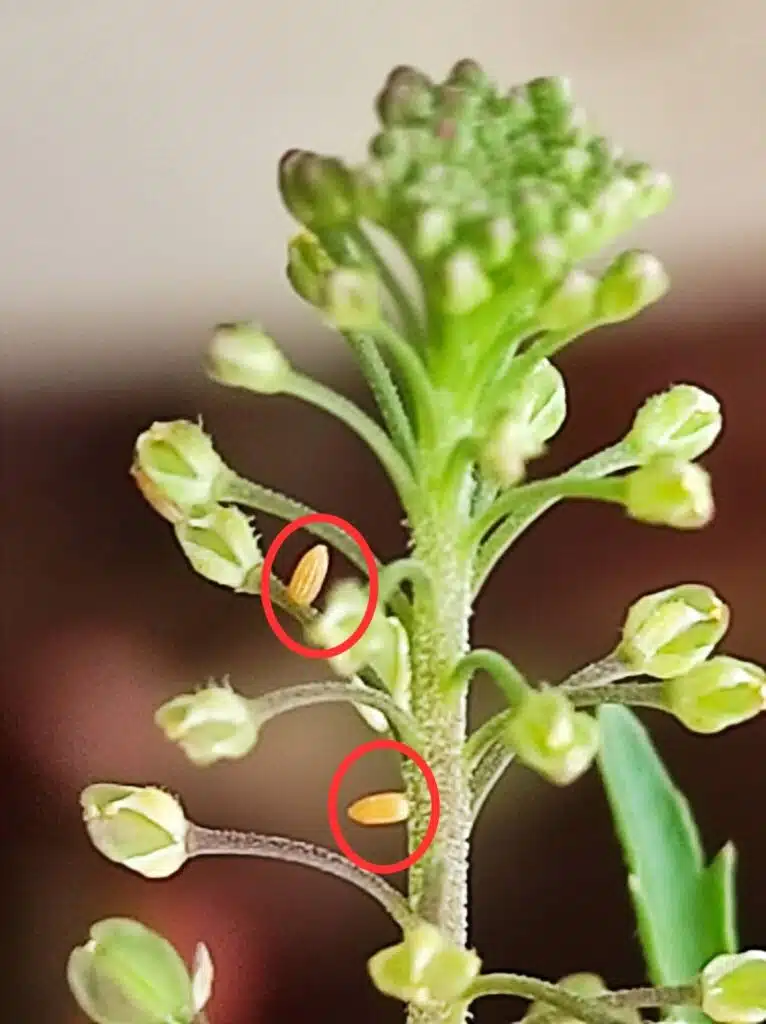
Checkered White butterflies lay eggs on the fruits of their host plants.
These eggs have an elongated shape and a yellow color. Ridges decorate the surface of the eggs.
Eastern Comma
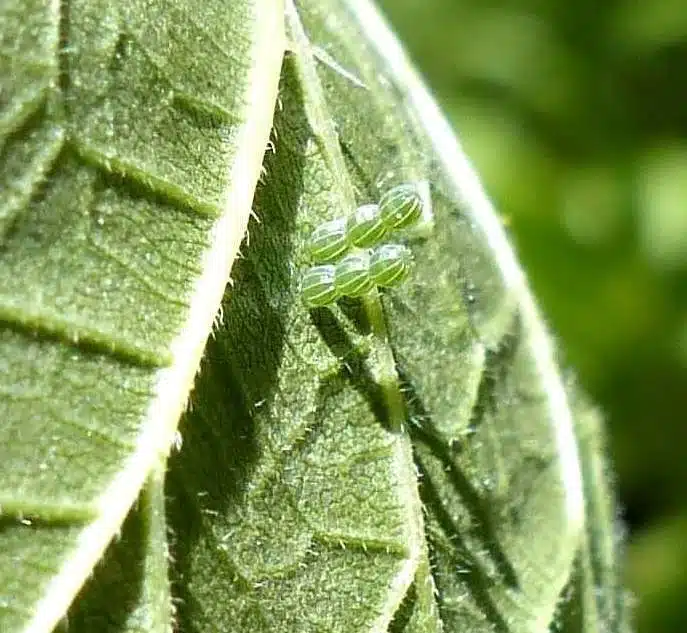
Eastern Comma butterflies lay a small number of eggs at once. These eggs are mainly green or dark green.
White stripes are distinguished on the surface of the eggs.
Summer Azure
Summer Azure butterflies lay blue eggs. These eggs have a round flattened shape.
The species rarely lays white eggs.
Variable Checkerspot
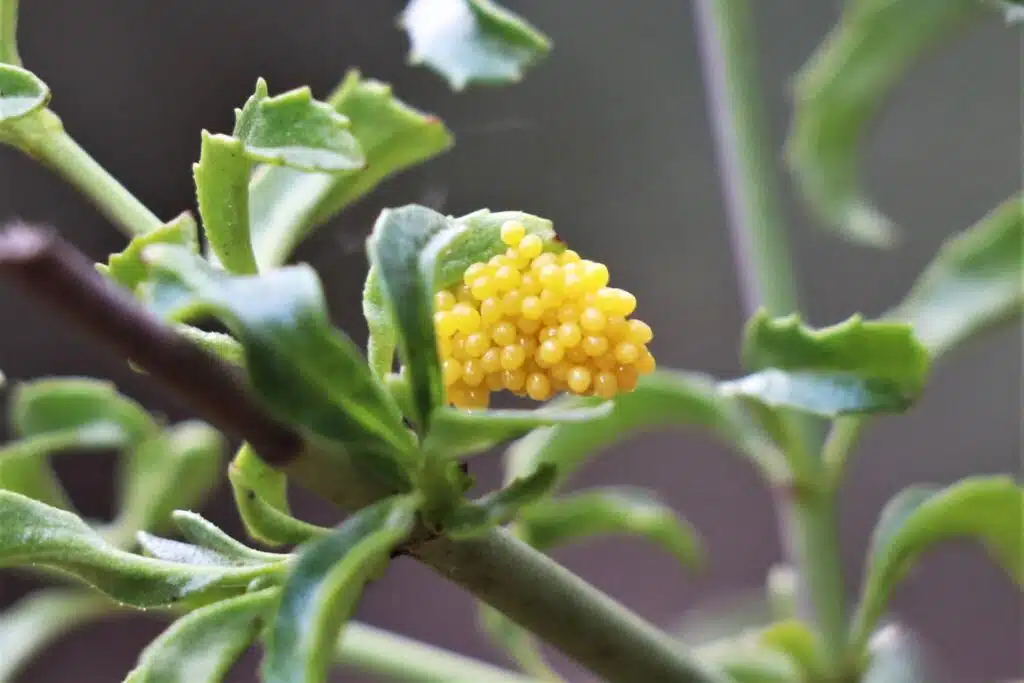
Clusters of eggs are laid by the female Variable Checkerspot.
The eggs are initially green. They then turn green-yellow within days.
Tawny Emperor
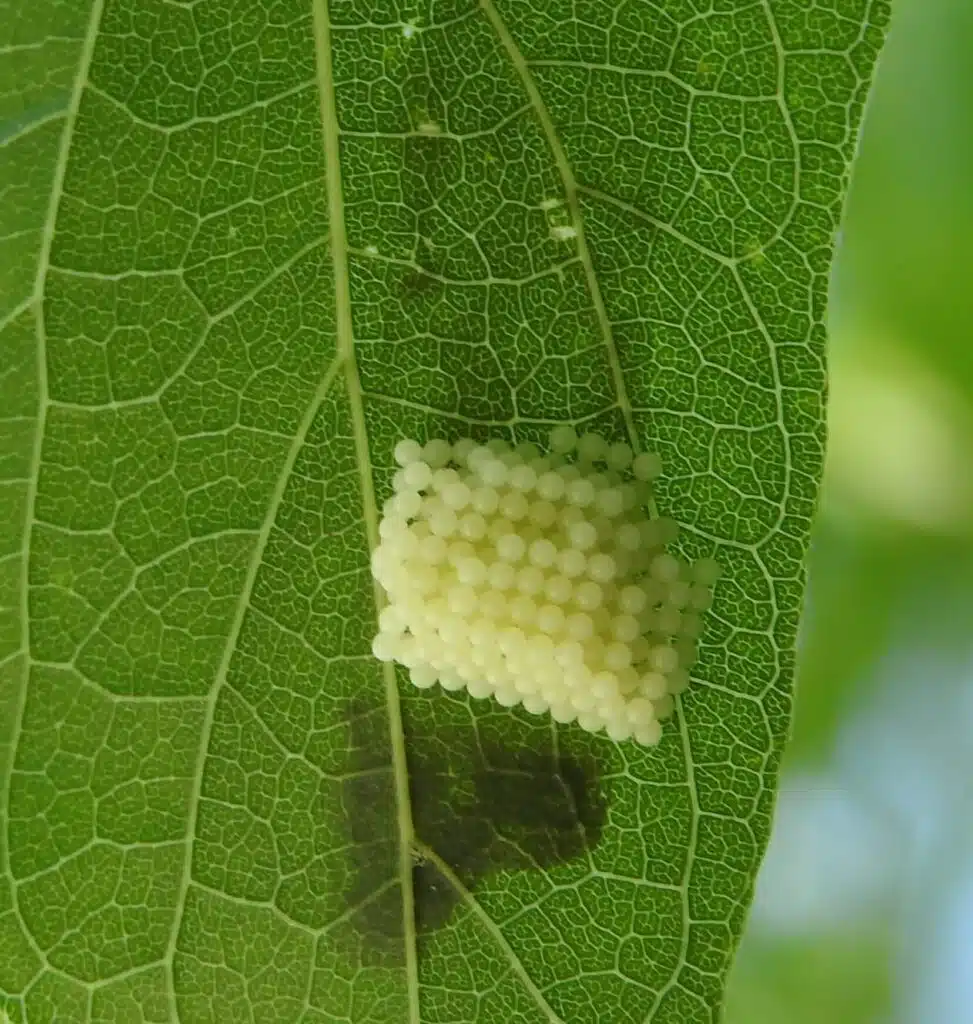
Large clusters of eggs are laid by Tawny Emperors.
These butterflies lay off-white or yellow eggs. The eggs become slightly pink afterward.
Butterfly Egg Hatching
Egg hatching takes anywhere between a few days and 15 days. Most eggs hatch within 5-6 days.
Many variables influence the time it takes for the eggs to hatch.
Temperature
Many species of butterflies like to lay eggs when temperatures are higher than 82°.
Some species can even lay eggs in slightly lower temperatures down to 60°.
The lower the temperatures the longer it takes for the eggs to hatch. Eggs cannot hatch in the winter.
Humidity
Humidity requirements are relative to each butterfly species. Higher humidity is typically better than drought and extremely low humidity which may also prompt some butterflies to migrate.
Butterflies live close to the water and lay eggs on vegetation that grows close to water such as willows with humidity levels of 80%.
Butterfly eggs can hatch within 2 days
Some of the fastest-hatching eggs in North America only take 2 days to reach the larval stage.
Such short hatching intervals are specific to warmer climates such as those in Southern Florida or Southern Texas.
On the other hand, butterflies in Northern US and Canada may see their eggs hatch in a long time which can take up to 15 days.
Most butterfly eggs hatch within 6 days.
Common Predators of Butterfly Eggs
Butterfly eggs are a quick source of food. The soft nature of these eggs makes them a target both for small and large predators.
Ants
Ants are attracted to certain species of butterfly eggs. They can be initially drawn by honeydew on the host plants and then move on to the eggs themselves.
Ants are a major predator of butterfly eggs as they come in groups.
Assassin bugs
Assassin bugs are among the most common butterfly egg and butterfly caterpillar predators.
These bugs can even kill butterfly caterpillars a few times their size. Assassin bugs can fly and they often access eggs on host plants quickly.
Lizards
All types of lizards eat butterfly eggs. You can find various types of lizards in woodlands or dense vegetation, areas naturally attracting butterflies.
Lizards in rainforests are a common predator of adult butterflies as well.
Tachinid flies
Tachinid flies are parasitic. They live nearly everywhere.
These types of flies are often seen on flowers, stems, and leaves. They actively look for a host.
Wasps
Wasps are some of the most common predators of butterfly eggs. Monarch butterfly eggs are frequently eaten by various species of paper wasps.
Frogs
Amphibians and small frogs are often interested in eating the eggs of various butterflies.
The species that lay eggs in moist areas are the most exposed to frogs as predators.
Spiders
Jumping spiders are among the spider species that feast on butterfly eggs. Only spiders that don’t spin spider webs are interested in these eggs.
North America is home to many spider species that move around for food during the day. These spiders are the most likely to eat butterfly eggs.
Summary
Butterflies lay individual eggs or eggs in clusters. Each of these strategies has its benefits. Individual eggs are harder to spot by predators.
Clusters of eggs require less effort to find a host plant by the female adult butterfly.
These eggs are normally spherical and they don’t measure more than 1-2mm with the largest eggs measuring up to 3mm.
Mostly white, yellow, or green, eggs can also be pink or even black.
Some butterfly eggs change colors within days.
Butterflies prefer to lay eggs in warm weather, typically at temperatures above 60 degrees and preferably over 80 degrees. The eggs hatch in a few days. They rarely take more than 7 days to hatch.